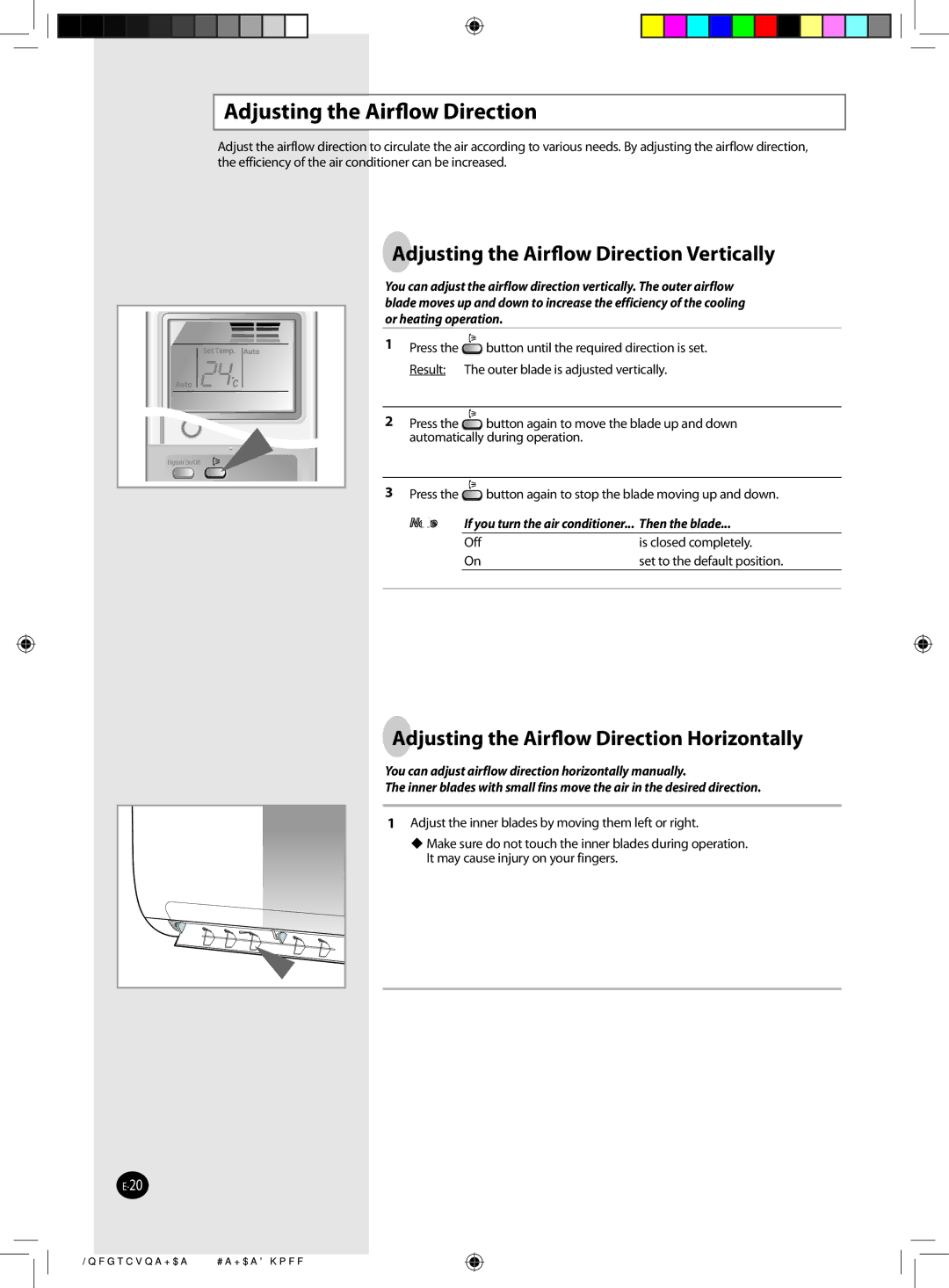AQ09MSDN, AQ24MSDN, AQ12MSDX, AQ18MSDX, AQ24MSDX specifications
Samsung, a leader in innovation and technology, has made significant strides in the HVAC (heating, ventilation, and air conditioning) sector with its range of air conditioning units, including the Samsung AQ18MSDN, AQ09MSDX, AQ12MSDN, AQ24MSDX, and AQ18MSDX. These models incorporate advanced features and smart technologies aimed at delivering efficient cooling and heating solutions tailored to meet various consumer needs.The Samsung AQ series is recognized for its energy efficiency, promoting sustainability while reducing energy costs. Many of these models are equipped with digital inverter technology, which ensures that the compressor operates at variable speeds. This means that the system can adapt to the indoor temperature, maintaining a consistent climate without frequent on-off cycling that conventional compressors typically utilize. This not only helps in conserving energy but also enhances the durability of the unit.
The AQ18MSDN, for instance, boasts powerful cooling capabilities along with a high energy efficiency ratio (EER), making it ideal for larger spaces. It features a sleek, modern design that seamlessly integrates into any interior while providing powerful airflow and ventilation. The model is equipped with a smart sensor that adjusts the temperature based on the occupancy of the room, optimizing performance.
On the other hand, the AQ09MSDX is a compact unit that suits smaller rooms perfectly. It offers quiet operation, ensuring comfort without disruptive noise levels. The inclusion of triple protection technology enhances durability, safeguarding the unit against voltage fluctuations, humidity, and dust.
Another notable model, the AQ12MSDN, strikes a balance between efficiency and performance, making it versatile for both residential and office environments. It includes features such as a self-cleaning function that prevents the buildup of harmful mold and bacteria, promoting healthier air quality.
In contrast, the AQ24MSDX takes cooling to the next level, ideal for larger commercial spaces. It is equipped with advanced filtration systems that significantly reduce airborne pollutants, providing a safer and healthier indoor environment.
Lastly, the AQ18MSDX merges power and features, making it suitable for various applications. Its intuitive control panel allows users to customize settings according to their preferences.
In conclusion, Samsung’s AQ series air conditioners stand out for their energy-saving capabilities, innovative designs, and smart technologies. Whether it’s for a compact apartment or a spacious office, these models provide reliable and efficient climate control solutions tailored to customer needs.

